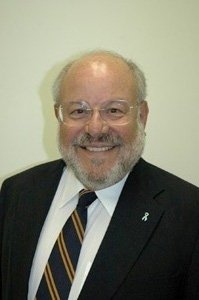By Karl Grossman and Harvey "Sluggo" Wasserman
At the core of the latest attempted "renaissance" of nuclear power is the Big Lie that atomic reactors are an answer to global warming. In fact, they are significant sources of heat.
There are more than 400 nuclear power plants in the world today that fission atoms at 300 degrees Centigrade, which is 572 degrees Fahrenheit. More are under construction or proposed. As the International Atomic Energy Agency states, "water-cooled reactors offer heat up to 300 degrees Celsius. These types of reactors include pressurized water reactors (PWRs), boiling-water reactors (BWRs), pressurized heavy-water reactors, and light-water-cooled graphite-moderated reactors (LWGRs)."
Some heat is absorbed in the water-- drawn from water bodies-- used to cool these nuclear power plants and then returned, still with considerable heat, to these rivers or seas.
The heat wave going on in recent weeks in Europe, in combination with this discharge of heated water from nuclear plants, has caused nuclear plants there to shut down.
Consider these headlines from recent days:
"France and Switzerland shut down nuclear power plants amid scorching heatwave," was the July 3rd headline on Euronews. As the piece explained: "To cool down, nuclear power plants pump water from local rivers or the sea, which they then release back into water bodies at a high temperature. However, Europe's ongoing heatwave means that the water pumped by nuclear sites is already very hot, impacting the ability of nuclear plants to use it to cool down. On top of this, nuclear sites run the risk of posing a dangerous threat to local biodiversity, by releasing water which is too hot into rivers and seas."
A New York Times article, also dated July 3rd, related how in Europe "operators shut down one of the two reactors at the Golfech Nuclear Power Plant in southern France after forecasts that the Garonne River, from which it draws water" and then discharges it after it is used in the plant as coolant, "could top 82 degrees Fahrenheit." The Times continued: "The Beznau Nuclear Power Plant in Switzerland, built along the Aare River, followed suit, shutting down one of its reactors on Tuesday and the other on Wednesday."
Ember, an independent London-based global energy think tank, on July 4th issued a report headed: "Heat and power: Impacts of the 2025 heatwave in Europe." It noted: "Heatwaves are becoming more frequent in Europe, putting electricity grids under severe stress."
It quoted its European program director, Pawel Czyzak, saying: "Heatwaves will not go away-- they will only get more severe in the future... Luckily, there is no lack of sunshine during heatwaves. The biggest opportunity is to store solar electricity--
"The French nuclear fleet has been impacted the most, with all but one of the 18 facilities experiencing some type of capacity reduction," said the report.
It continued: "While heatwaves bring major changes, these are partially offset by the large volumes of solar energy available during daytime. In fact, June 2025 was the highest European Union solar electricity production month on record." And this "kept the grid well-supplies during daytime hours."
The Ember report also pointed out, "Solar power is one of the cheapest forms of electricity that Europe has."
Nuclear power, beyond being subject to catastrophic accidents such as those that occurred at Fukushima, Chernobyl and Three Mile Island, extreme cost, substantial carbon emissions during the nuclear "lifecycle-- "mining of uranium, milling it, enrichment of the uranium fuel and other operations-- is a sitting technological duck when extreme temperatures strike.
(Note: You can view every article as one long page if you sign up as an Advocate Member, or higher).





